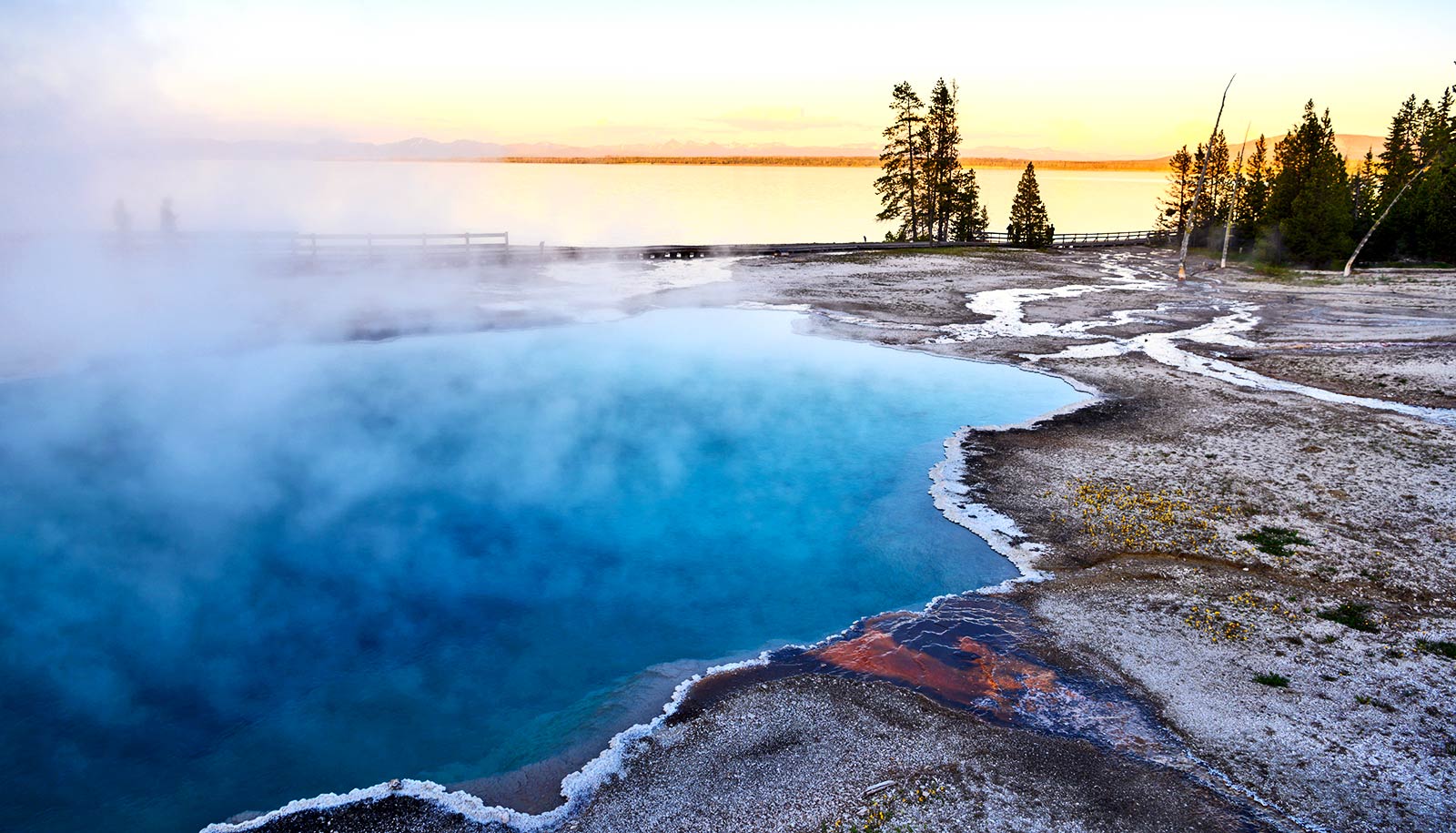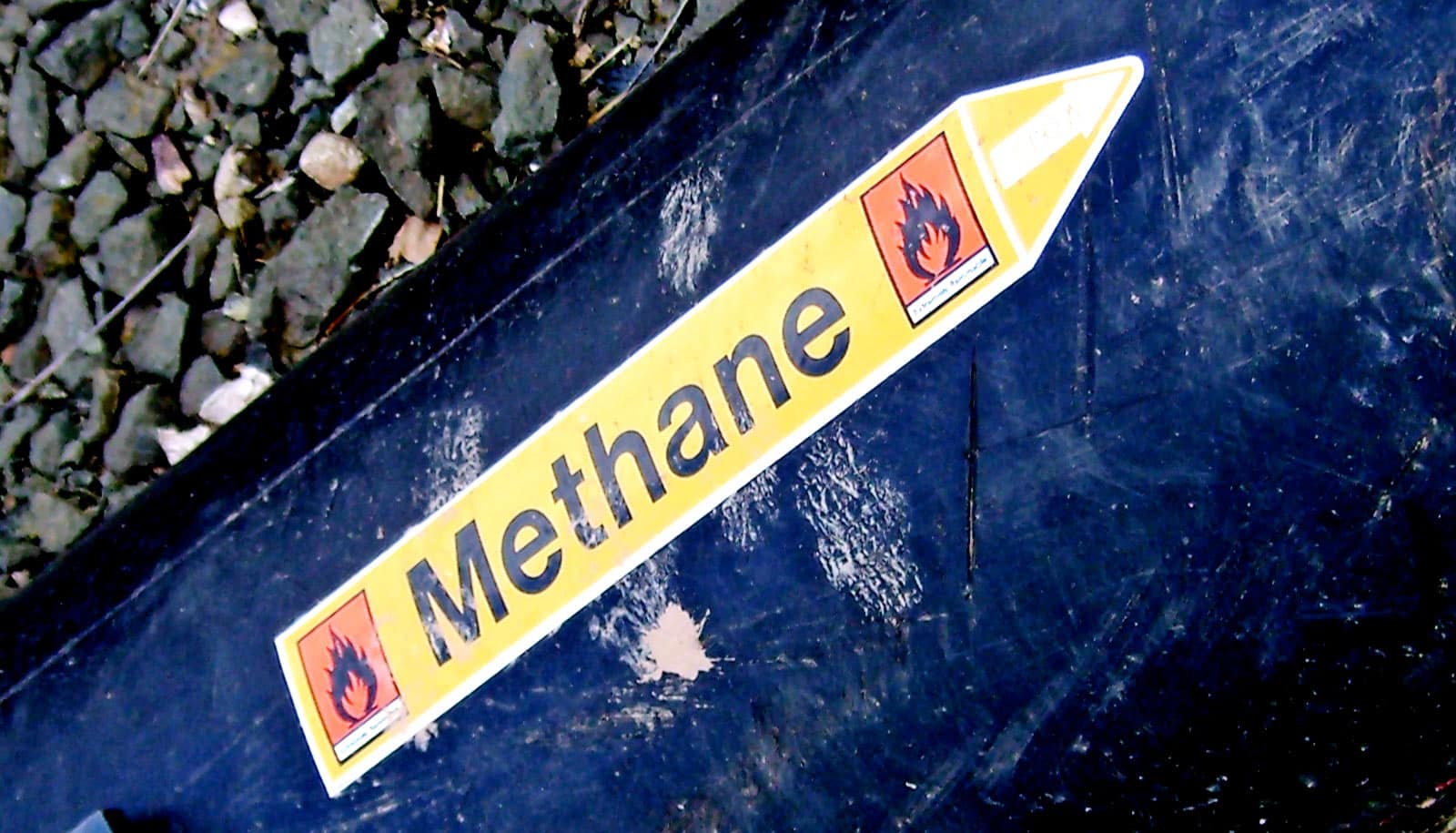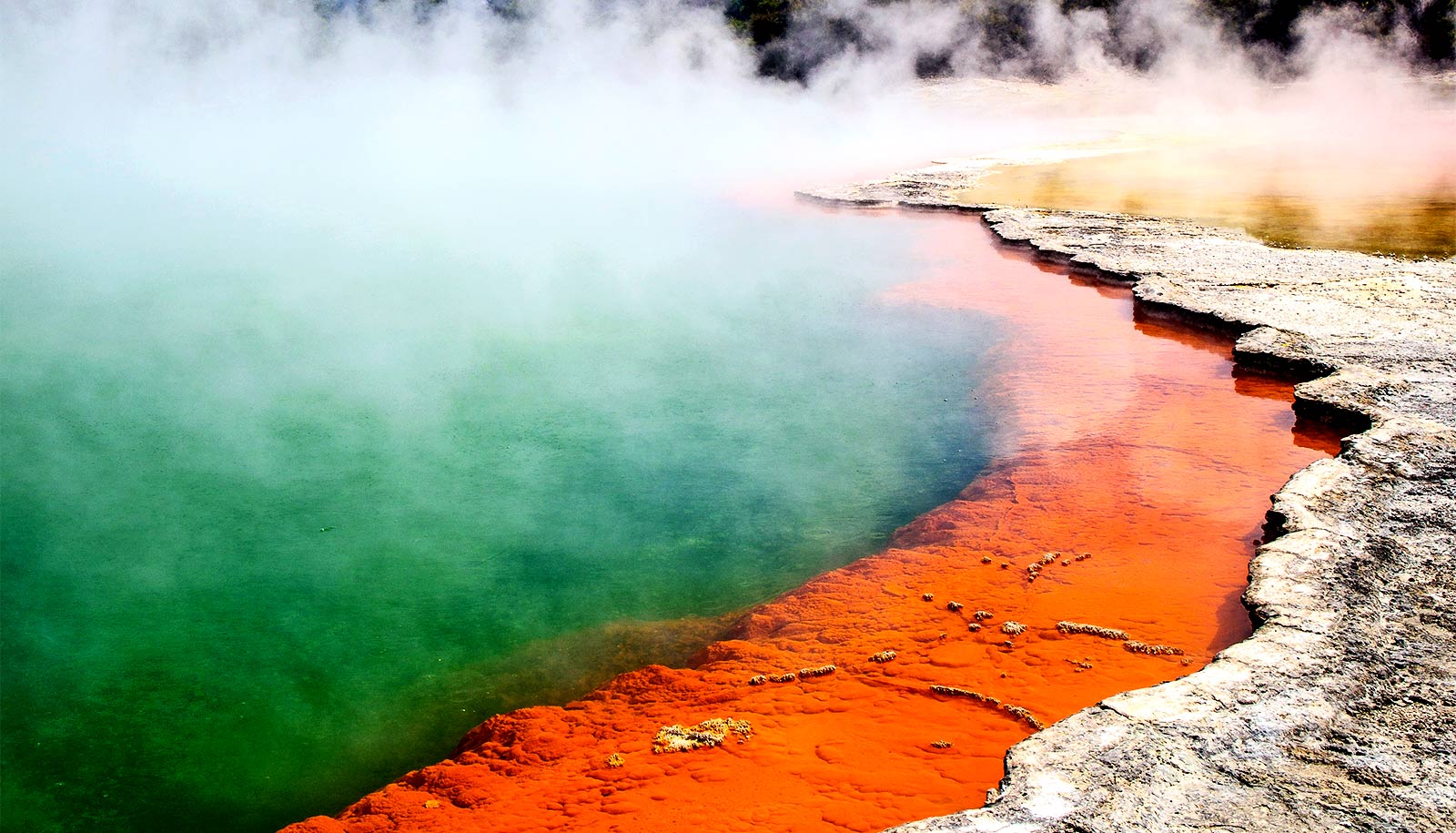Researchers have identified an entirely new group of microbes quietly living in hot springs, geothermal systems, and hydrothermal sediments around the world
They appear to play an important role in the global carbon cycle by helping to break down decaying plants without producing the greenhouse gas methane, the researchers report.
“Climate scientists should take these new microbes into account in their models to more accurately understand how they will impact climate change,” says Brett Baker, assistant professor at the University of Texas at Austin’s Marine Science Institute and lead author of the paper in Nature Communications.
The new group, which biologists call a phylum, is named Brockarchaeota after Thomas Brock, a pioneer in the study of microbes that live in extreme environments such as the hot springs of Yellowstone National Park. Brock died April 4, 2021. His research led to a powerful biotech tool called PCR, which is used for, among other things, gene sequencing and COVID-19 tests.
“The description of these new microbes from hot springs is a fitting tribute to Tom’s legacy in microbiology,” Baker says.
‘Uncultured microorganisms’
So far, researchers have not successfully grown Brockarchaeota in a laboratory or imaged it under a microscope. Instead, they identified the microbe by painstakingly reconstructing their genomes from bits of genetic material collected in samples from hot springs in China and hydrothermal sediments in the Gulf of California.
Baker and the team used high-throughput DNA sequencing and innovative computational approaches to piece together the genomes of the newly described organisms. The scientists also identified genes that suggest how the microbes consume nutrients, produce energy, and generate waste.
“When we looked in public genetic databases, we saw that they had been collected all around the world but described as ‘uncultured microorganisms,'” says first author Valerie De Anda, referring to specimens other researchers have collected from hot springs in South Africa and Wyoming’s Yellowstone, and from lake sediments in Indonesia and Rwanda.
“There were genetic sequences going back decades, but none of them were complete. So, we reconstructed the first genomes in this phylum and then we realized, wow, they are around the world and have been completely overlooked.”
The Brockarchaeota are part of a larger, poorly studied group of microbes called archaea. Until now, scientists thought that the only archaea involved in breaking down methylated compounds—that is, decaying plants, phytoplankton, and other organic matter—were those that also produced the greenhouse gas methane.
“They are using a novel metabolism that we didn’t know existed in archaea,” says De Anda. “And this is very important because marine sediments are the biggest reservoir of organic carbon on Earth. These archaea are recycling carbon without producing methane. This gives them a unique ecological position in nature.”
Biotech, agriculture, and biofuel applications
A phylum is a broad group of related organisms. To get a sense of just how large and diverse phyla are, consider that the phylum Chordata alone includes fish, amphibians, reptiles, birds, mammals, and sea squirts. The phylum Arthropoda, which accounts for about 80% of all animals, includes insects, arachnids (such as spiders, scorpions, and ticks) and crustaceans (crabs, lobsters, shrimp, and other tasty sea denizens).
In July 2020, Baker, De Anda, and others suggested the possible existence of several new phyla among the archaea, including Brockarchaeota, in a review article in Nature Microbiology. This latest study adds more than a dozen new species to Brockarchaeota, describes their metabolism, and demonstrates that they are indeed a distinctly new phylum.
In addition to breaking down organic matter, these newly described microbes have other metabolic pathways that De Anda speculates might someday be useful in applications ranging from biotechnology to agriculture to biofuels.
Additional coauthors are from Sun Yat-Sen University and Southern Marine Science and Engineering Guangdong Laboratory (China); the University of California, Berkeley; Utrecht University; Dartmouth College; China University of Geosciences; and Royal Netherlands Institute for Sea Research.
The National Science Foundation, China’s Ministry of Science and Technology, and the National Natural Science Foundation of China funded the work. The US Department of Energy Joint Genome Institute took part in the sequencing.
Source: University of Texas at Austin



